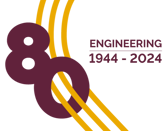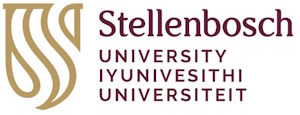
[Graduation Spotlight: Murray Bester, BEng in Mechatronic Engineering]
A final-year, undergraduate student from the Department of Mechanical and Mechatronic Engineering at Stellenbosch University (SU), Murray Bester, handed in his final year project report (skripsie) at the end of October, and now he is only waiting for the graduation ceremony.
Bester’s final-year project, for which he received a distinction, was titled “Designing, Building and Testing of a Low-Cost Dynamic Racing Simulator”. The aim of the project was to create a dynamic racing simulator that could give motion feedback to drivers to help them decrease their lap times. The simulator was designed to be low-cost and accessible to anyone with basic knowledge of mechanical and electronic design.
His project uses a direct current (DC) motor to drive the simulator chassis to rotate about a bearing underneath the driver’s pedals. This design generates yaw motion of the chassis, which in turn creates sway forces on the driver. “This is the force that drivers use to determine the level of traction during cornering and the simulation thereof has proven to increase performance and feedback levels for the user,” he explains.
On deciding on a topic for his final year project, Bester says he spent most of his university career researching cars and racing. “I thought it fitting that I propose my topic in this field since I knew I would be more invested in a project I enjoyed. I wanted to do a dynamic racing simulator and, through research, discovered that one of the difficult aspects would be the modelling of my system.”
Dr Willie Smit, a senior lecturer in the Division for Design and Mechatronics, was his modelling lecturer at the time, which Bester believed made him a suitable supervisor as he would understand the mechanical and electrical aspects and give him key insights into both departments. “I approached him with the topic, and he was more than happy to accept my proposal. He has been exceptional in supervising me; he has always made time for me and asked me the difficult questions that lead to lots of introspection about certain topics,” says Bester.
He has always been fascinated using maths and science to explain real-world problems and how these fundamentals are used to create machines and technology. Thus, studying in an engineering field was an obvious choice. “I chose Mechatronics specifically because I recognised that most aspects of the industry include a mechanical and electrical approach, and this degree would give me the best of both worlds.
“I have not regretted it since I have learned about mechanical fundamentals and the use of electronics to operate the mechanics of machines. I chose to study at SU’s Engineering Faculty because of several family members, including my parents, who have attended SU and describe it as ‘the best years of their lives’. I also recognised the quality of the Faculty and thought it would provide me with the best opportunities for growth, learning and success,” he says.
Photo: Pictures of the low-cost simulator from different angles. (Insert) Close-up of the drive unit.



